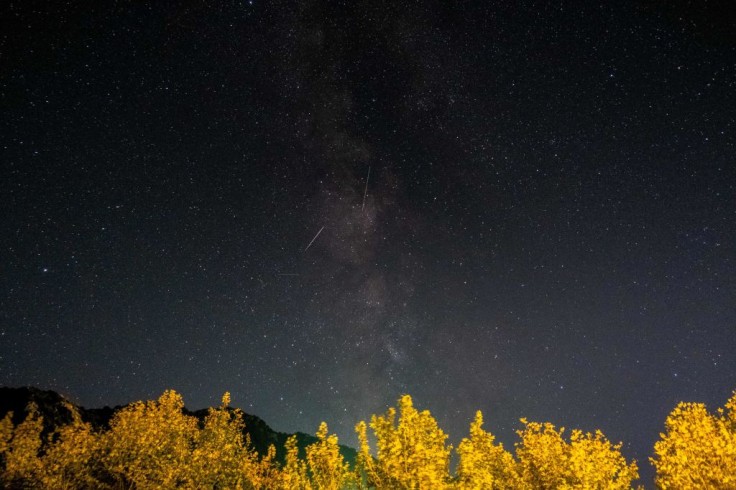
NASA has shared some tips on how to go stargazing this month of October. According to the space agency, there are several groupings of the Moon, planets and stars that are expected to be observed during sunrise and sunset. The said groupings will include Summer Triangle's stars named Vega, Deneb and Altair.
In line with this, NASA also invited people to know more about the science and explorations of the Moon on October 16.
NASA Stargazing Dates and Tips to Remember
In a video on Twitter, NASA shared some tips on how to spot stars. Not only did the organization share some stargazing guidelines, but they also incorporated the dates to look for the stars. The said dates to remember are the following:
- October 10: After sunset, the five-day old crescent moon will join the planet Venus as well as the bright-orange-colored Antares star in the Southwest.
- October 15 and 16: Venus and Antares will have close conjunction for about a degree and a half.
- Last week of October: The planet Mercury will pop up and be visible in the morning. For about 30 to 45 minutes before sunrise, Mercury will be observed 10 degrees above the Eastern horizon or about the width of the fist held at arm's length.
- October 30: During the last couple of hours before the daybreak, the crescent moon will join brilliant blue-white star Regulus.
Aside from these dates, two stars will be visible for the whole month of October. These stars are called Vega and Deneb.
🍂 Fall weather have you itching to step outside? You're in luck! This month, you'll have a chance to see several groupings of the Moon, planets, and stars at sunrise & sunset. That's not all – check out October skywatching tips from @NASASolarSystem: https://t.co/npBDIpUCcX pic.twitter.com/2nq3eaeEFJ
— NASA (@NASA) October 2, 2021
How to Spot Vega and Deneb
As mentioned, Vega and Deneb are part of the Summer Triangle stars, which also includes Altair. Aside from this, both Vega and Deneb are also included in a special group star together with Fawaris, Alderamin, Errai, Thuban, Iota Herulis, and North star's Polaris. For thousands of years, Vega and Deneb take turns with Polaris. The said turns occur for about a few hundred years more. This means that the distinction of North Star is Polaris'.
Regarding its composition, Vega is bluish-white while Deneb is a blue-white supergiant star.
As compared to Sun's 27-day rotation, Vega is considered a fast rotator that spins every two and a half hours. Moreover, Deneb is identified as one of the brightest stars, which means that Deneb can be witnessed from an unaided eye.
To have a glimpse of Vega and Deneb, NASA advised people to look high overhead a few hours before it gets dark. In addition, these stars rotate around the northern celestial pole. Before setting in the pre-dawn hours, these also fall toward the western horizon.
October Moon Placements
For the month of October, NASA also released the dates of the moon placements. These placements are the following:
- October 6, 2021 - New Moon
- October 12, 2021 - First Quarter
- October 20, 2021 - Full Moon
- October 28, 2021 - Third Quarter
In line with this, NASA stated that October 16 is "International Observe the Moon Night." The said event aims to celebrate learning about the science and explorations of the Moon.
To know more about the said exploration, proceed to their website.









